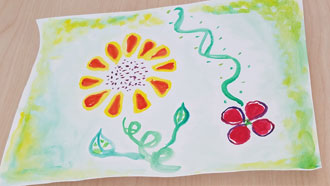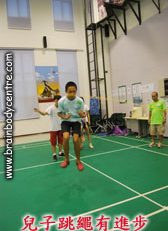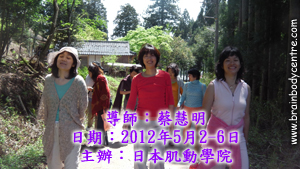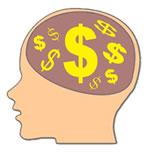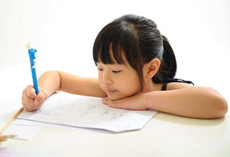Using Brain Gym with Stroke Clients
By Amy Choi, Hong Kong, January 28, 2017
I have had some experiences in using Educational Kinesiology/Brain Gym to balance clients who were in a coma, had a stroke or brain accidents.
In working with them, I have derived the following principles:
ask for permission when working with someone in a coma or in semi-conscious state
use what you know and trust the process
the educational model works well and it is a big plus to the medical model (That is, for stroke patients/clients who are in the hospital receiving medication, acupuncture, physical, occupational or speech therapy etc., the educational model adds on to the existing medical treatments given to them as a patient. When they are guided towards seeking what they want, they feel more empowered).
5-step balance (process) is good when the person is clear about what he/she wants as the learning goal. If he/she is not clear, step back to move forward, e.g. just do the movements or the learning menu.
When working with the muscular system, I found that it is effective working in the following way. It is important to communicate these principles to the person who had a stroke – so that he/she becomes more patient with himself/herself, and to wait for his/her own progress:
work with static postures first, e.g. lying, sitting, standing, etc.; then with the dynamic postures (e.g. moving the hands, moving the legs, sitting down and standing up, etc.)
work with the core muscles first, then gross motor muscles, then fine motor muscles
work with the sensory system first (ask him/her to feel it), then the motor system (ask him/her to move it)
for overly tight muscles – facilitate to relax (Brain Gym Deepening Attitudes), or release (Brain Gym Lengthening Activities)
for overly loose muscles – activate and stimulate (mid-line movements); first passively, then actively
if the muscles cannot be moved at all, educate the client to re-connect with the muscles in these ways:
explain to him/her about the muscle’s anatomy, functions, using origin and insertion technique by stimulating the Golgi tendons of the muscles. (fine detail, left brain education)
explain to him/her how the muscle function relates to his/her daily life! (big-picture, right brain education) saying: “when this muscle works again, it helps you to lift a cup.” This will help guide them in setting their goals.
explain to him/her that the intention to move is as important as the actual moving of the muscle itself. Encourage the client to visualize the muscle moving when you are helping him/her to do it passively. Verbal cue helps to educate the brain. So describe clearly what the muscle is doing although he/she cannot sense it well by himself/herself. e.g. say: “now, your quadriceps are contracting; now, they are lengthening.”
“Dennison Laterality Repatterning” and “Three-Dimensional Repatterning” works well in helping a client to regain the sense of mid-line for whole-body movements, as well as facilitating the three-dimensions working together. Do it lying down if he/she cannot stand up. Do it passively when he/she cannot actively do it.
For stroke patients with loss of visual field:
Double Doodle Play Drawing stuck on the wall of the room of a stroke client
For clients who cannot move their hands: I stuck “Double Doodle Play” drawings to the side of their room where they cannot see well and encourage them to move their heads towards THAT WAY to see it.
For clients who can move their hands: Double Doodle Play helps in regaining hand-eye coordination and the ability to see in the midfield.
it takes TIME for the brain and the body to re-connect. Sometimes the person who experiences these conditions may become impatient, loses hope or may even become depressed. It is important that the person who offers the balances (especially if you are going to be there for a long time) is CENTERED and remains POSITIVE. When in doubt, do balances for yourself!
Patience is the word. Last, but not least, always come back to PACE – educate the client to find his/her own timing and rhythm for learning and healing. Respect his/her own PACE in learning and healing.

